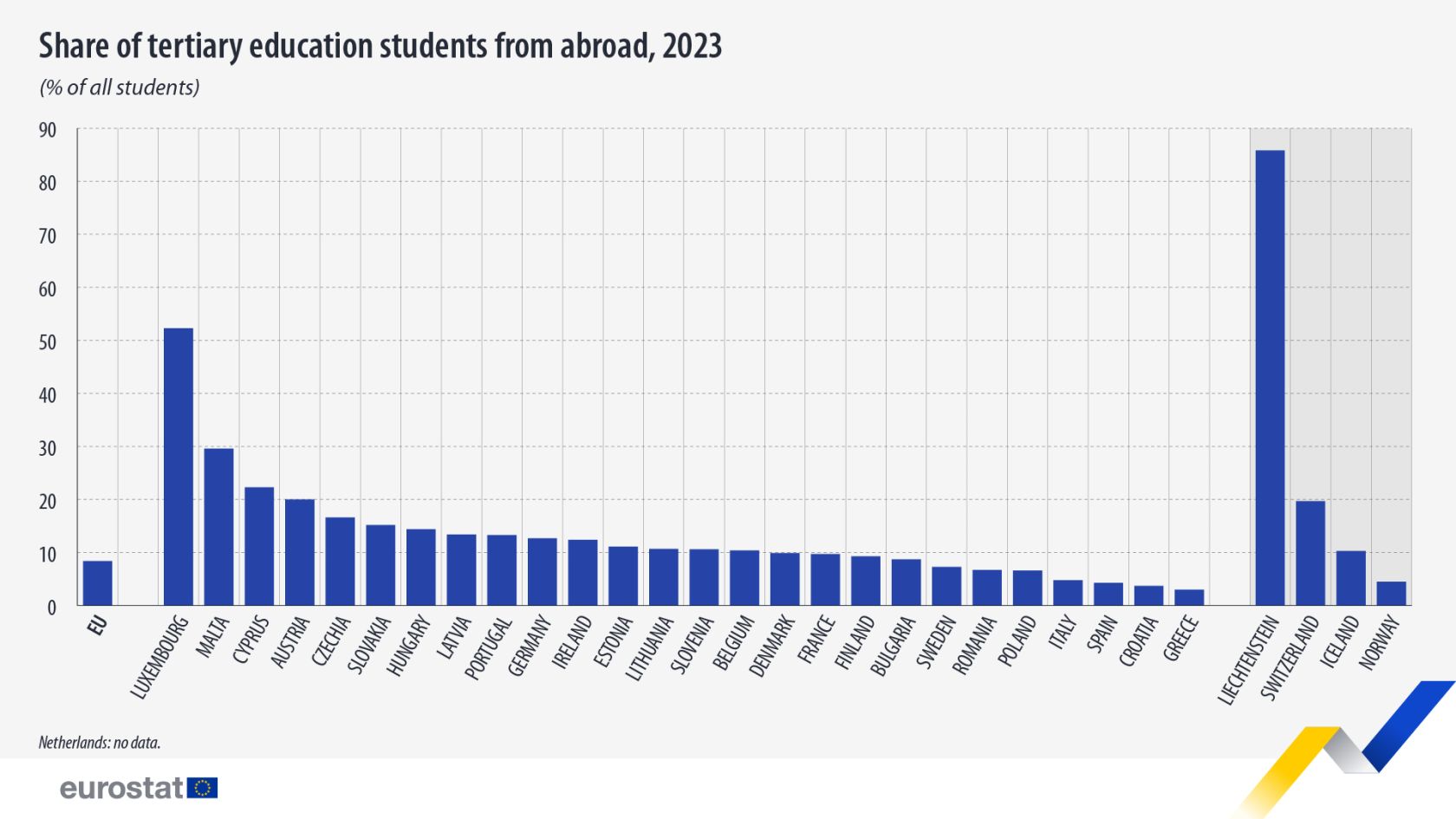But among the various Member States, there are significant differences worth noting. In Luxembourg, for example, more than half of tertiary students (52.3%) come from outside the country. In Malta, almost three in ten are foreigners (29.6%). And in Cyprus, about two in ten (22.3%) are not nationals of that country.
In contrast, in Greece, only 3% of tertiary students are foreigners, while Croatia (3.7%) and Spain (4.3%) are also at the bottom of the table.
And in Portugal? More than 10% of tertiary students are foreigners, which places Portugal above the EU average and in ninth place in the European rankings.
In 20 of the 27 European Union countries, the majority of foreign tertiary students originate from other European countries. For example, in Slovakia, 91.3% of foreign students come from other European countries. And in Slovenia, 89.4% of foreign students come from European backgrounds.
In contrast, Portugal is the European Union country with the lowest proportion of European students. It doesn't even reach 20%.

Here, students of African origin are the most prevalent (42.1%). Only France has a higher percentage of Africans in its tertiary education (52.3%).
In Ireland, Finland, Germany, and Italy, students of Asian origin predominated: 45%, 40.1%, and 36% of the total number of foreign students in tertiary education, respectively. More than 10% of Portuguese tertiary education students (which includes higher education) are foreign. According to data released this Friday by Eurostat, Portugal is one of the ten European Union (EU) countries with the most foreign students, with four in ten coming from Africa.
According to the statistics office's highlight, in the EU as a whole, in 2023, there were 1.76 million foreign students in tertiary education. This corresponded to 8.4% of the total student population.












